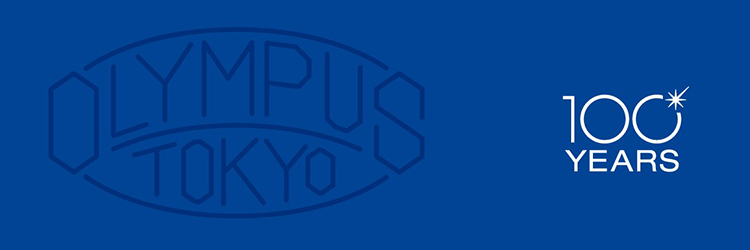Olympus is a large company with products including cameras, medical equipment, life science microscopes, and industrial inspection equipment. The strands from these different businesses come together to form Olympus’ corporate DNA. Much like Olympus as a whole, the industrial business is likewise made of many threads drawn together and bound by the drive to serve a global community of customers. Who we are today is rooted in our history.
In the Beginning
The conventional ultrasonic testing (UT) and thickness gage portion of our nondestructive testing (NDT) business was founded by three researchers from a renowned technology school in Boston, MA. They were driven to identify problems, build solutions, and then find ways to bring those solutions to market. This ‘innovate first, market it later’ mentality served us well over the years.
The business, then called Panametrics, started out selling ultrasonic transducers. An essential part of building transducers is hooking them up to a pulser/receiver (a device that sends an impulse through the transducer and then receives the signal coming back) to test them and make sure they work correctly. However, the manufacturing team had trouble finding the pulser/receivers they required. So, as any good engineering-driven team would do, they started building their own. Recognizing that there was demand for pulser/receivers, they began selling them. Soon, Panametrics was able to expand and bring on more staff.
Building Relationships
Another of Panametrics’ early products were thickness gages. While not flashy, thickness gages were instrumental in growing the industrial business.
The thickness gage business developed proficiencies early on in three key areas—high-temperature measurements, measuring through and auto-subtracting coatings, and measurement accuracy. Each of these proficiencies enabled us to address major customer pain points. We also added a waveform display (a frequent customer request at the time) and an internal datalogger to our landmark 26DL PLUS gage to create a tool that solved many challenges.
As our thickness gage business grew, we established more relationships with customers. These relationships mean everything to us—it’s your feedback that helps drive the direction of our products and influenced how our business has developed over the years.
A Period of Growth
While the UT/thickness gage business was developing, other companies that would become part of Olympus’ core NDT business were also growing and innovating. In Quebec City, Canada, a company called R/D Tech was creating advanced portable phased array technology. In 2003, R/D Tech brought phased array technology to the portables market with the OmniScan® MX flaw detector. Shortly thereafter, they began a rapid expansion to grow into a comprehensive NDT solutions provider. In 2004, they acquired Panametrics’ NDT business, and in 2005, they acquired a company that made instruments for ultrasonic testing, eddy current testing, and bond testing.
Once we combined our efforts as one organization, we worked to help educate people about the complementary use of the various technologies we offered and began developing new technologies that meet the changing needs of our customers.
All in the Family
Having grown into a large, world-class NDT instrument and probe manufacturer, the stage was set to join the Olympus family. R/D Tech became part of Olympus in 2005, which enabled us to add remote video inspection borescopes and videoscopes and industrial microscopes to our offerings.
The scope and breadth of our technology had grown large, but we kept looking for new technologies that could benefit our customers. During the early 2000s, some of our customers began asking us about X-ray fluorescence (XRF) technology. XRF provides fast, on-the-spot material chemistry, making it a useful inspection technology. We added X-ray fluorescence (XRF) and X-ray diffraction (a related technology that provides mineralogy) to our toolbox via acquisition, enabling us to offer customers even more comprehensive inspection solutions.
Flagship Flaw Detectors
Let’s be honest—early ‘portable’ flaw detectors weren’t all that portable. You could take them out into the field, but they were big and bulky. That all changed as technology progressed and, significantly for us, with the launch of the EPOCH® 600 instrument in 2010. When designing it, we spent a lot of time and effort figuring out how to pack all the advanced measurement functionality we had developed into the best possible form factor. We knew the instrument had to be small, rugged, and as lightweight as possible. This was quite a challenge, but the result, the EPOCH 600 flaw detector, was very successful.
The form factor we designed was so well-liked that it’s still in use today! The EPOCH 650 and NORTEC® 600 flaw detector, the BondMaster® 600 bond tester, and the Magna-Mike® 8600 Hall effect thickness gage all use the case we initially designed for the EPOCH 600.
In 2011, our flaw detector development continued with the launch of the OmniScan MX2, our best-selling portable phased array device to date. Featuring time-of-flight diffraction (TOFD), a new UT module, and easy-to-use software, the OmniScan MX2 flaw detector quickly became popular with our customers. In fact, many of our customers tell us that the MX2 was the phased array instrument they learned on when they began their training. We’re proud of the OmniScan flaw detector’s legacy and the contributions that all our products have made to the industry.
All-In on the Future
Many things have changed over the years. We’ve grown larger, added more technologies, and rose from a series of smaller companies to a truly global company with offices all over the world. The constant throughout our history is our focus on listening to our customers and delivering solutions that enable them to do their jobs as quickly and efficiently as possible.
Even though we’ve gotten bigger, we still strive to maintain the agility that enabled us to be so successful throughout the years. While we celebrate Olympus’ 100th anniversary, we’re also looking ahead. New technologies, such as artificial intelligence and the cloud, are poised to change the way people perform inspections. And we’ll be there on the leading edge, just like we’ve always been.
Get In Touch
